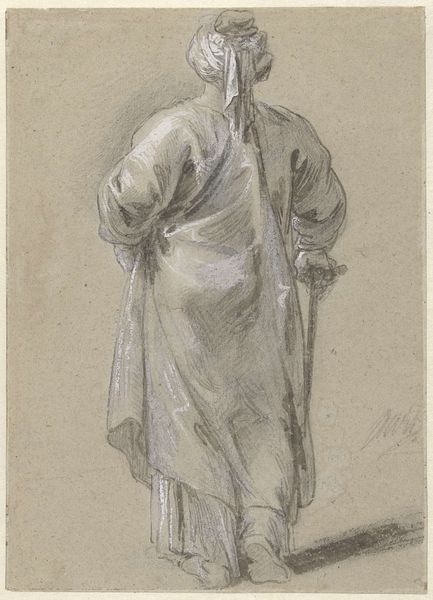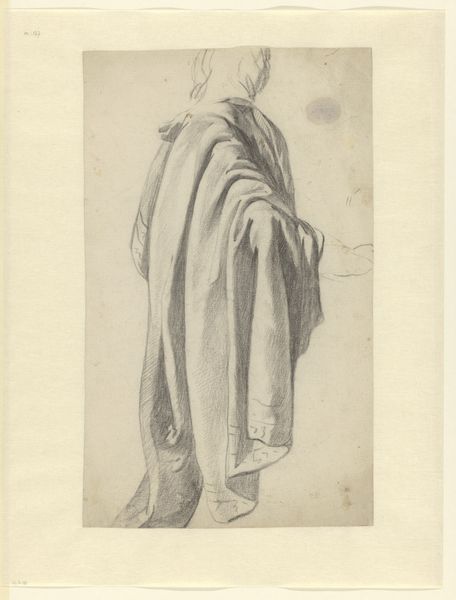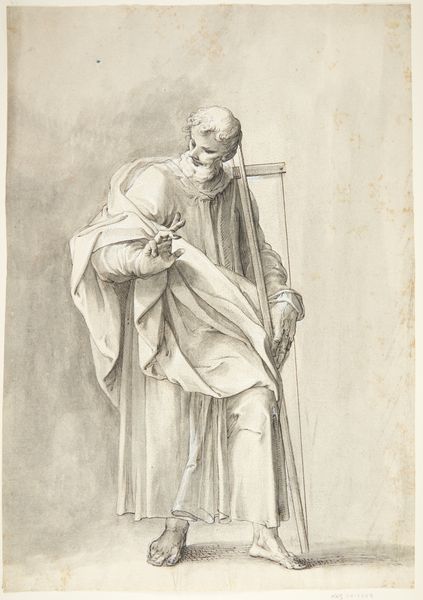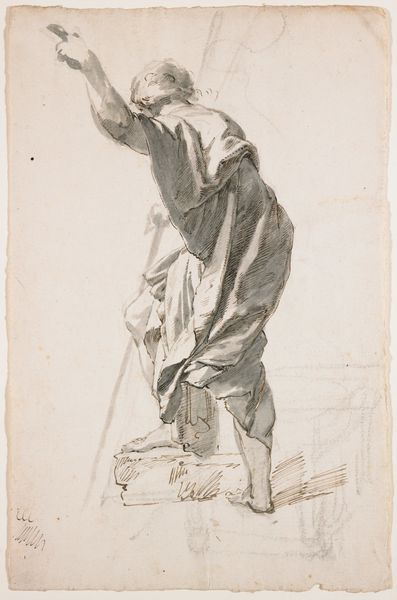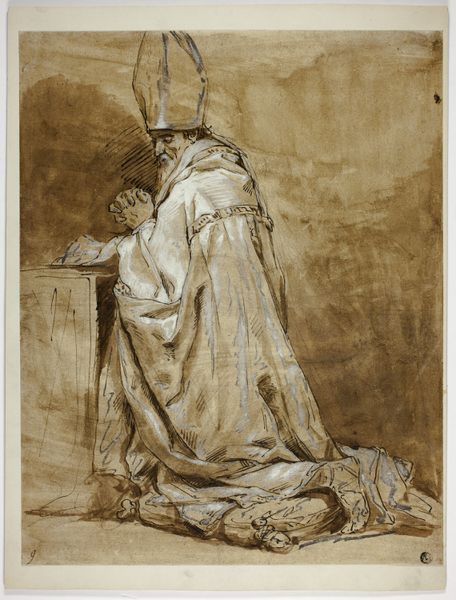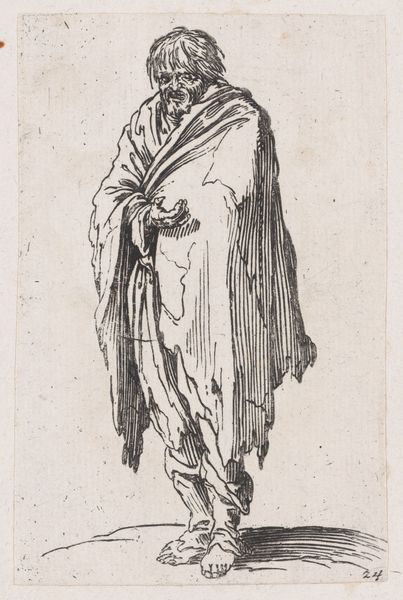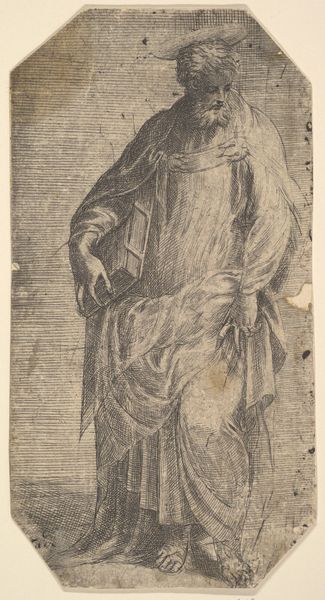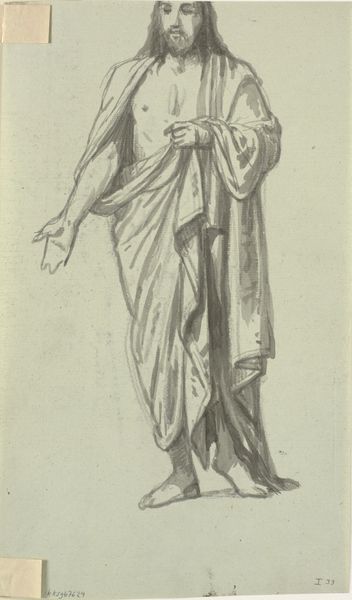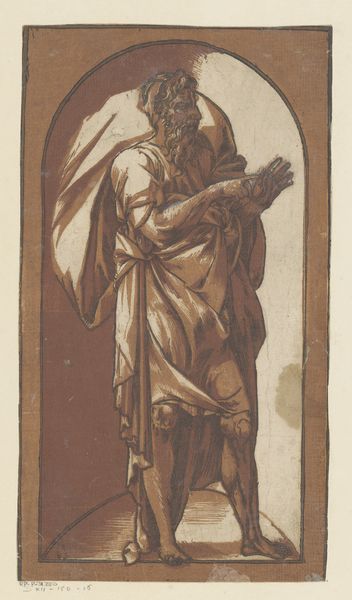
drawing, pencil
#
portrait
#
pencil drawn
#
drawing
#
pencil sketch
#
charcoal drawing
#
mannerism
#
figuration
#
pencil drawing
#
pencil
#
portrait drawing
#
pencil work
#
history-painting
Dimensions: 426 mm (height) x 290 mm (width) (bladmaal)
Curator: Before us, we have a drawing titled "Jesus og de 12 apostle: Simon," or "Jesus and the 12 Apostles: Simon," attributed to Matthäus Gundelach and thought to have been created sometime between 1566 and 1654. It's currently held at the SMK, the National Gallery of Denmark. Editor: The immediate impression is one of solemnity. The figure, rendered in what appears to be delicate pencil work, carries a weight—both literally, perhaps, with the peculiar saw-like instrument, and metaphorically. There's a stark simplicity despite the draping of his robes. Curator: It’s believed this drawing is preparatory work. Gundelach, active primarily in Augsburg, was known for his contributions to printmaking and his work within the historical context of the late Renaissance and the transition into the Baroque. The subject here fits squarely within the tradition of religious iconography, albeit in a less finished form. Editor: The saw certainly demands attention. In Christian iconography, St. Simon is often associated with a saw, referring to the tool of his martyrdom. Its inclusion signals not just identity, but a premonition of suffering. Gundelach has carefully rendered the fabric draped around his shoulders and the simple tool resting beside him. Curator: Precisely. Martyrdom was, after all, a visual language in itself. These attributes, such as the saw, helped the illiterate populace identify biblical figures. The circulation of these images was very effective for spreading faith throughout Europe. Editor: But there’s a tension here. We don't see a triumphant saint; he stands with his back turned, suggesting perhaps a reluctance or an awareness of his impending fate. The folds of fabric seem almost shroud-like. The artist successfully captured the emotional weight. Curator: Given the Mannerist elements evident in Gundelach’s style, this emotional intensity is not surprising. He aimed to create visual drama but it’s the understated power here, born of a simpler medium, that transcends time, despite the conventions of the period. Editor: Yes, the emotional content feels palpable, still relevant. The depiction avoids didacticism. It is an interesting representation, inviting us to ponder the burden of faith and destiny through carefully observed details and visual symbolism.
Comments
No comments
Be the first to comment and join the conversation on the ultimate creative platform.


